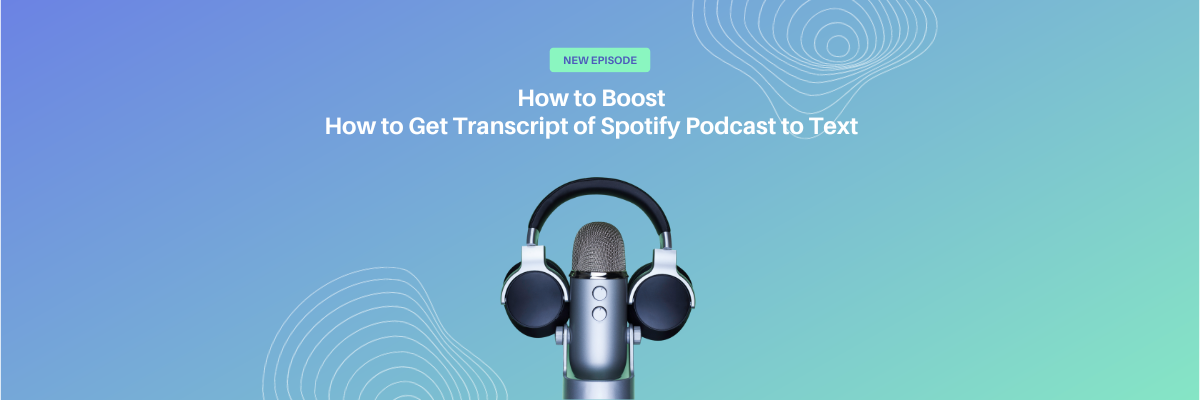
How to Get Transcript of Spotify Podcast in 2025
98% accurate, real-time transcription in just a few clicks. 58 languages and multiple platforms supported.
Marketing and social media managers already know the value of Spotify podcast transcripts, but there’s something they’re not telling us: transcripts are a great way to gain new listeners. With an estimated 546.7 million listeners in 2024, reaching a wider audience is tricky - but I can help.
Over the last few years, I’ve co-hosted and produced solo and guest-based podcasts, so I know firsthand how important podcast transcripts are for your brand, reach, and accessibility.
Even though Spotify is the world’s second-largest podcasting platform, with over 98 million monthly downloads, it doesn’t allow you to download transcripts directly. That’s a missed opportunity if you ask me, but there’s an easy workaround.
I’ll show you the easiest way to develop show notes and create an accurate podcast transcript in just a few clicks. Hint: It involves a tool called Notta.
3 ways to get transcripts of podcasts on Spotify
In this guide, I’ll walk you through three methods of getting transcripts of Spotify podcasts, including:
Automatic real-time transcription using Notta
Using Spotify’s mobile app (for Podcasters)
DIY manual transcription using your favorite word-processing software
Method 1: How to get Spotify podcast transcripts with Notta
The first method we’ll discuss is using Notta to transcribe Spotify podcasts quickly and with 98.86% accuracy.
Notta’s technology converts audio (and video) to text in an instant, with the power of natural language processing (NLP).
It’s much faster than what any human could achieve with manual transcription, saving you time and money so you can focus on your podcasting instead.
Step 1: Get a copy of the audio
With Spotify Premium, you can download podcast episodes, but they’re encrypted. Instead, Listen Notes is a great third-party service to capture the audio you need. Here is how to quickly download the audio of any podcast episode.
Visit the Listen Notes website, which is an online library of podcasts from creators in many niches. On Listen Notes, type the name of the podcast in the search bar and hit enter. Click on the podcast you want from the list shown.
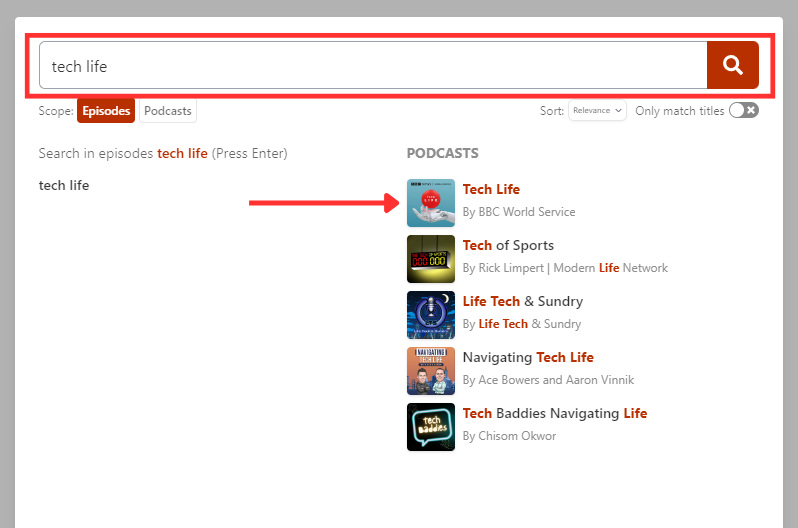
Select the episode you want to download as audio. You’ll see a three-dot icon to the right of the play button. Click this to display further options as shown below.
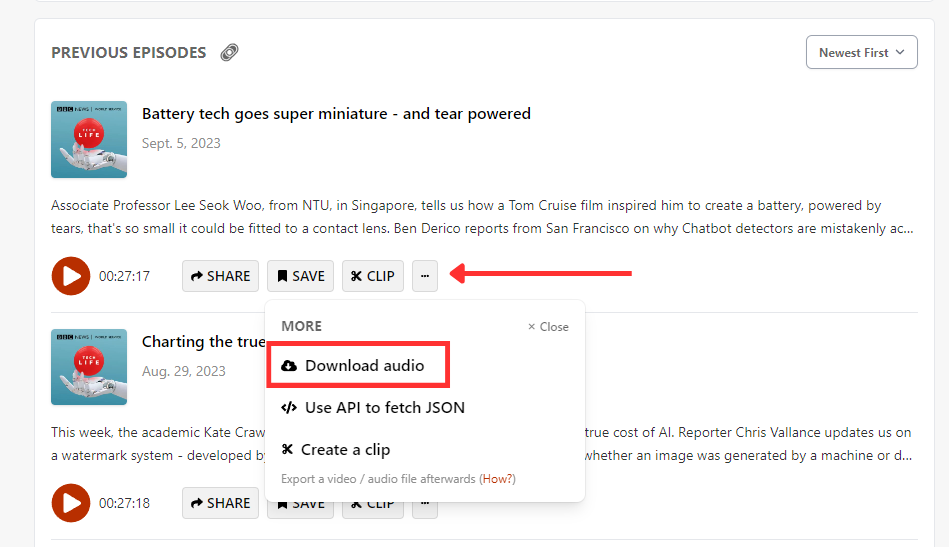
4. Click the ‘download audio’ option to save the MP3 file to your device.
Step 2: Import your podcast audio recording to Notta for transcription
Set up your free Notta account, or log into your existing account. Then, navigate to the Notta dashboard.
On the right-hand side of your dashboard, you’ll see a number of options. You’ll see a tab on the left side of your screen with a number of options. Select ‘Upload & transcribe.’
Drag your audio file into the pop-up window. Your file will automatically begin uploading to Notta. Once the upload is done, the transcription process will begin.
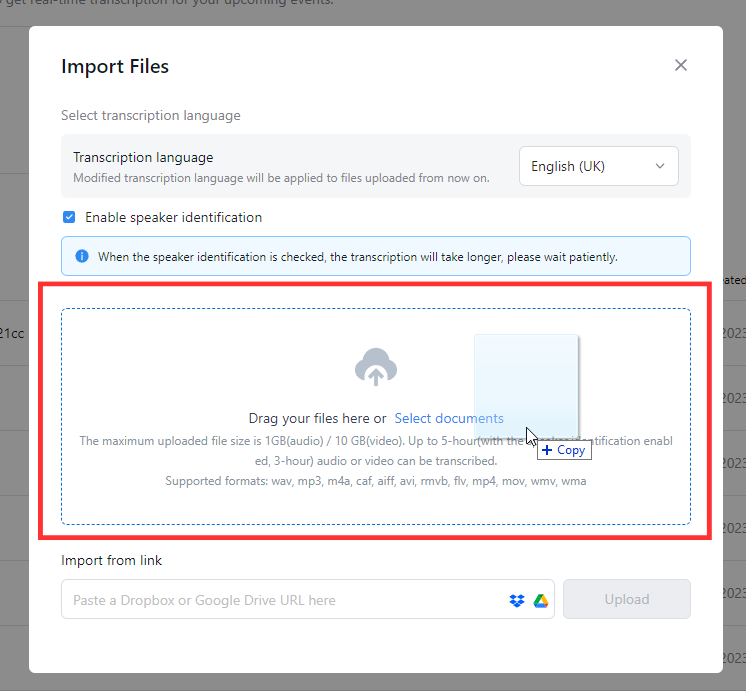
Step 3. Create your Spotify podcast transcript
Once Notta has finished transcribing, click to view the full text. Read through your podcast transcription, then identify and tag each speaker (this step is important when you have multiple speakers).
Then, click the speaker name to change it in the drop-down menu.
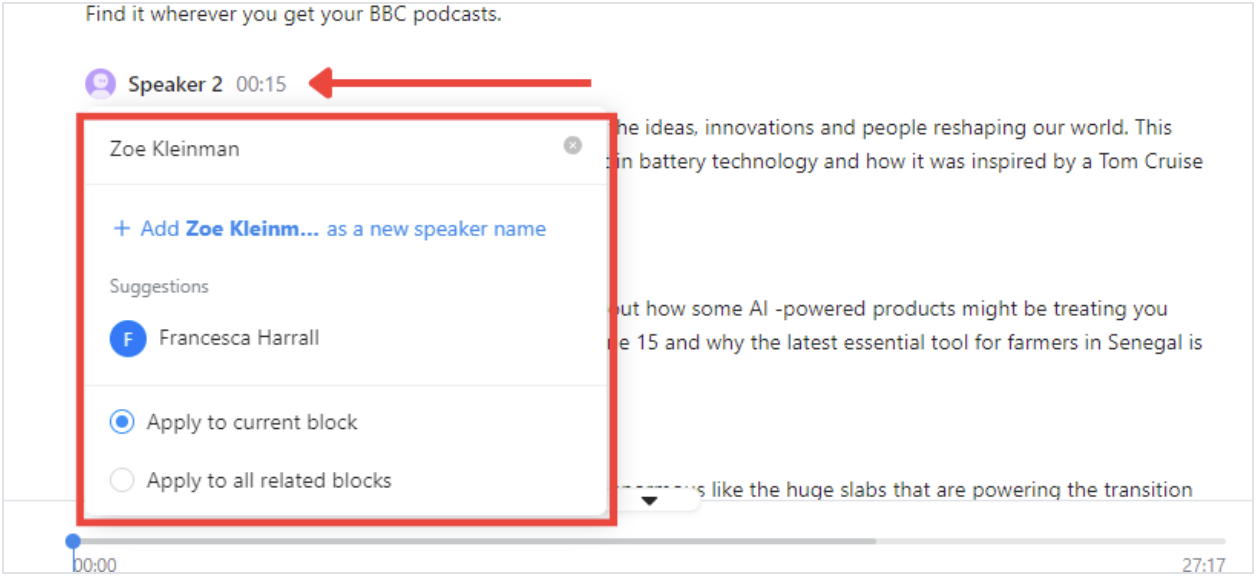
Click any word or phrase in your transcript to review the matching audio, then make any corrections. Then, proofread your transcript to confirm it’s free of grammatical errors.
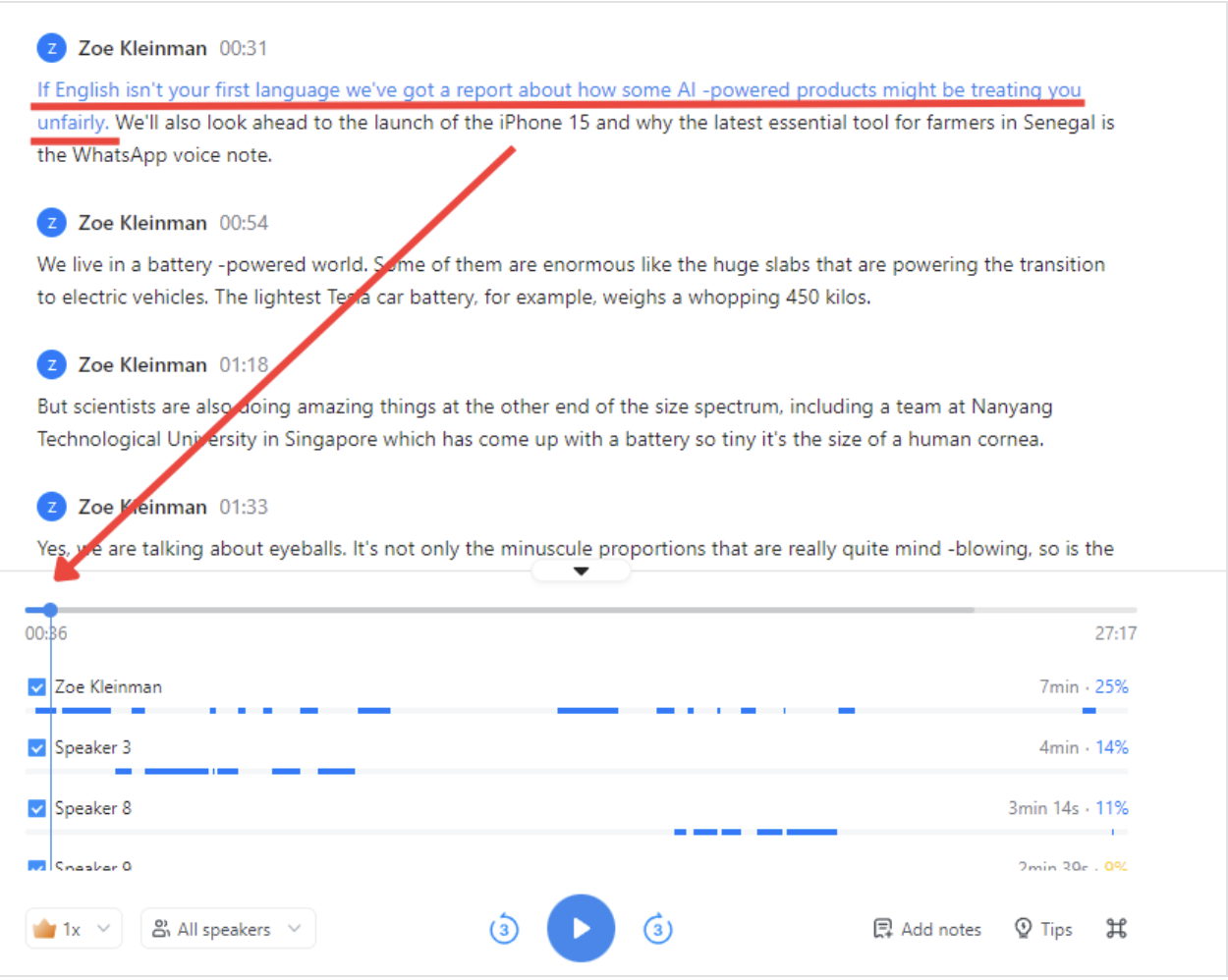 On the left-hand side of the window, click ‘General’ to generate a general summary of the podcast transcript. You can easily come back to this if you don’t have time to read through the full transcript and need crystal-clear highlights.
On the left-hand side of the window, click ‘General’ to generate a general summary of the podcast transcript. You can easily come back to this if you don’t have time to read through the full transcript and need crystal-clear highlights.
Export your transcript by clicking the ‘Download’ icon in the top right-hand corner and selecting your preferred format.
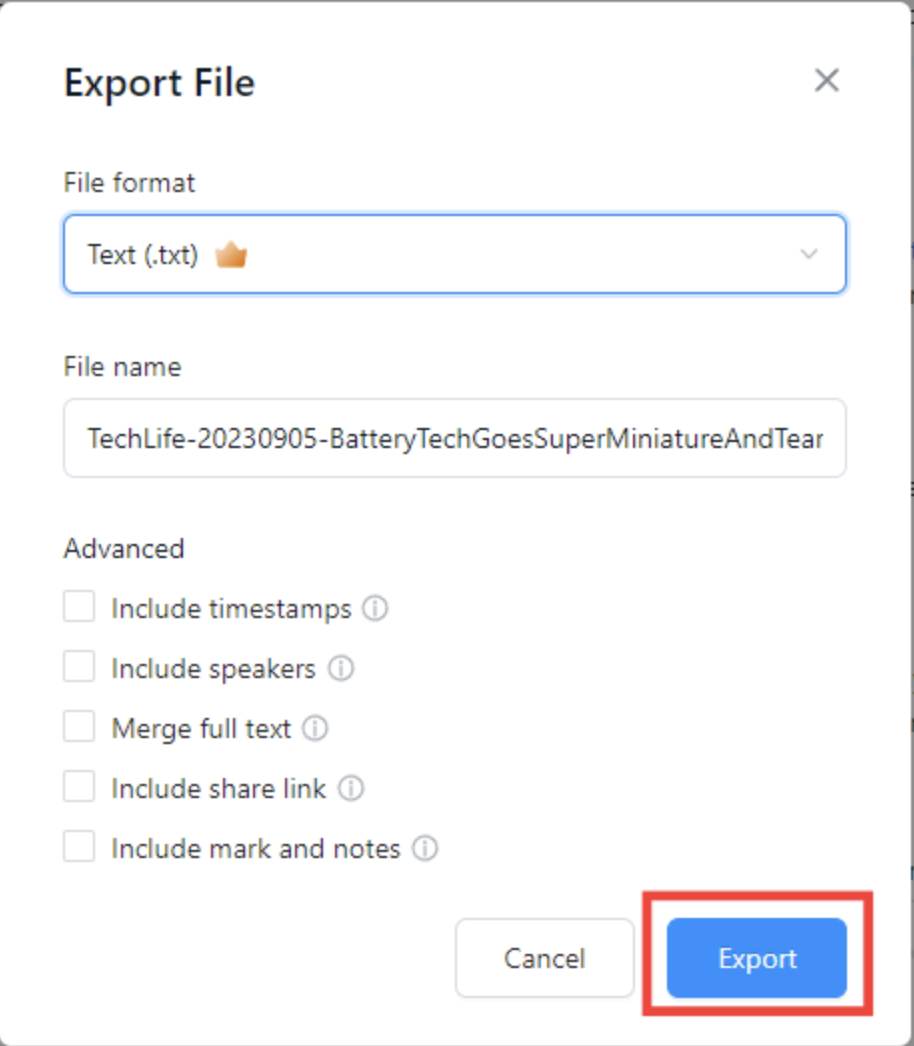
Notta accurately records every word and detail spoken during conversations in real-time. You can also upload audio or video in any format and get a text transcript back in seconds.
Method 2: Use the Notta Chrome Extension to transcribe a podcast in real-time
The Notta Chrome Extension can transcribe any audio or any webpage in real-time.
If you’ve ever scrambled through a dozen open tabs trying to find the page you need, the Chrome extension makes transcribing simple. No more frantic searching, no manual uploads - one little click and the Notta bot is at your service.
Here’s how to do it for a podcast on Spotify.
Step 1: Install and prepare the Notta Chrome Extension
Visit the Notta Chrome Extension web store page and click ‘Add to Chrome.’
Once you’ve logged into your Notta account, click on the Chrome extension icon, and choose the correct transcription language. This will indicate what language your Notta Chrome Extension will use.
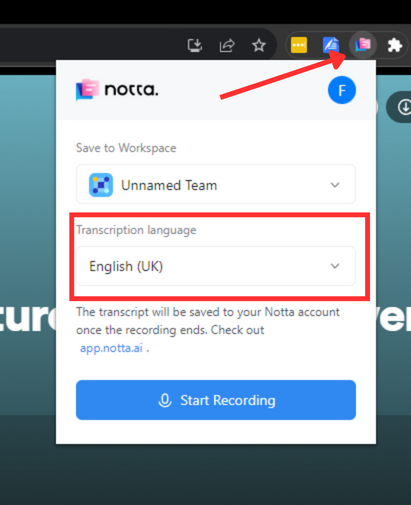 Navigate to the Spotify Web Player and search for your podcast in the search bar. Select the podcast and find your episode by scrolling through the episode list and click the 'Play' button.
Navigate to the Spotify Web Player and search for your podcast in the search bar. Select the podcast and find your episode by scrolling through the episode list and click the 'Play' button.

Step 2: Create your Spotify transcript
In the Notta extension window, click ‘Start Recording.’ You will see a soundwave appear once the Spotify transcript is recorded, like this:
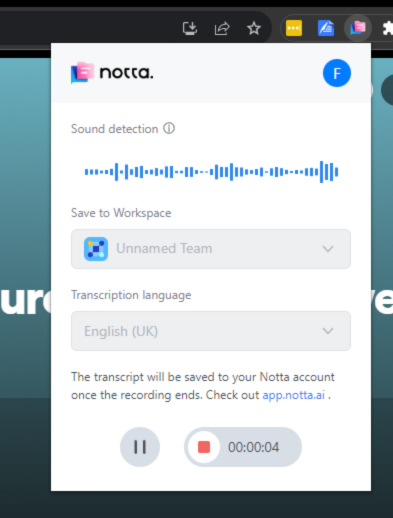 To end the recording, click the red 'Stop' button. Notta sends the transcription directly to your dashboard.
To end the recording, click the red 'Stop' button. Notta sends the transcription directly to your dashboard.
Navigate back to the Notta dashboard to find the recently recorded podcast. You’ll find your transcript under ‘Recent recordings.’ It should have the same name as the podcast episode, so it's easy to spot.

Assign speaker names where necessary.
For example, if Notta identifies an unknown speaker, you can fix this by clicking on their name and adding a new one (or choosing from the drop-down menu). Then, Notta will update that speaker’s name throughout your transcript.
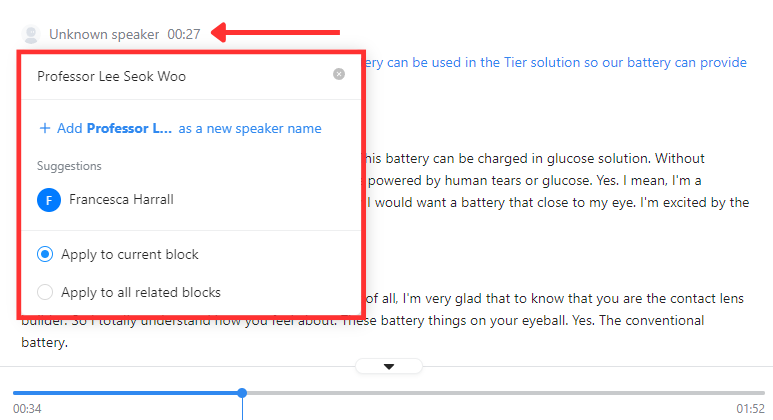 Highlight any section for review, and the software will let you listen to the audio segment. As with method 1, remember to summarize your podcast with Notta’s AI tool. Simply go to your transcript and click ‘General’ to receive a time-saving synopsis.
Highlight any section for review, and the software will let you listen to the audio segment. As with method 1, remember to summarize your podcast with Notta’s AI tool. Simply go to your transcript and click ‘General’ to receive a time-saving synopsis.
To export your transcript, click the 'Download' icon and select a file format.
![]()
Using the Spotify app
You can use the Spotify app to view transcriptions, but this is only available to the podcast publisher. Here’s how:
Go to ‘Episodes’.
Select the episode you’d like a transcription for.
Below the preview of the episode, you’ll see a button labeled ‘transcripts.’ Click this, then click ‘view.’
DIY manual Spotify podcast transcription
Manually transcribing a podcast means listening to the audio and typing out the dialogue yourself (or using manual transcription services). Here’s how you can do it using any word processing tool like Microsoft Word or Google Docs.
Open a new blank document. In this example, I’m using Google Docs.

2. Open your Spotify podcast episode, either in the web player or desktop app.
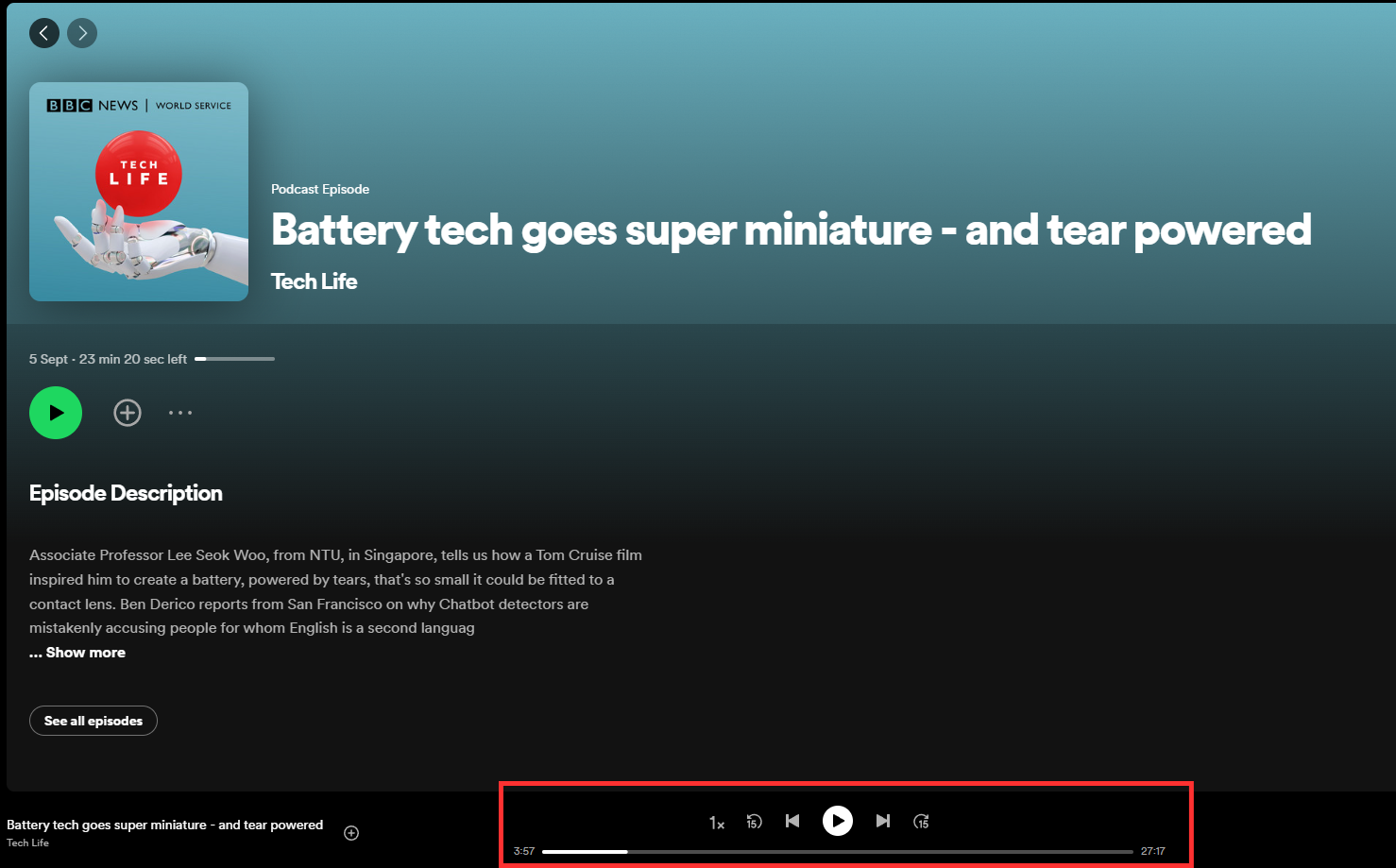
3. Press the play button to begin. You can also adjust the playback speed to make it easier to type. I found 0.7x was slow enough, but Spotify supports up to 0.5x speed.
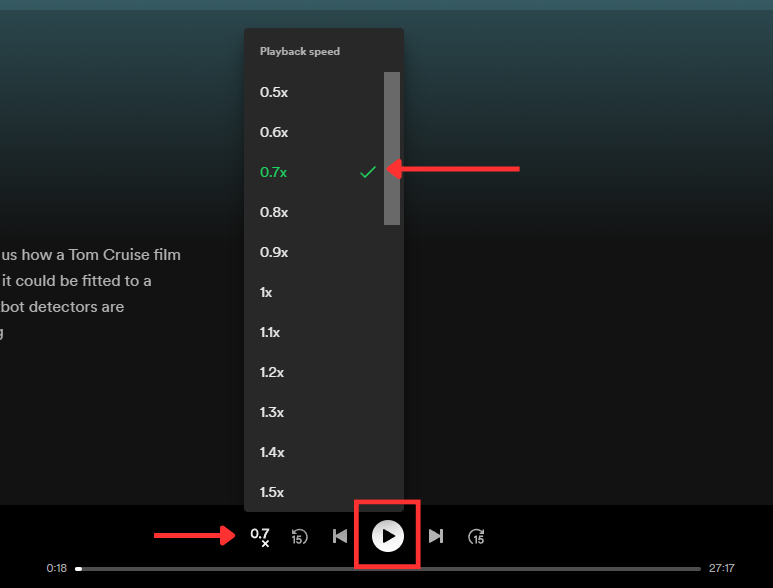
4. Start typing everything you hear into your blank document, pausing regularly to double-check all details. Include timestamps and speaker labels in your notes.
By the end of the podcast, you should have a full transcript.
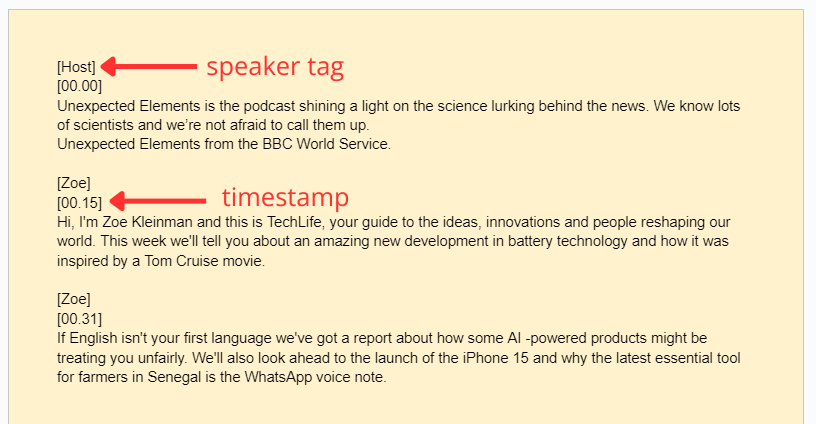
Notta accurately records every word and detail spoken during conversations in real-time with 98.86% accuracy.
Why transcribe Spotify podcasts?
There are a number of benefits to transcribing Spotify or Apple podcasts, like promoting accessibility or increasing your business’s reach. With free transcript generators like Notta, it’s never been easier or faster to transcribe your favorite listens.
It improves your SEO
Podcast transcripts are one of the quickest ways to win in search engine optimization (SEO). For example, research by This American Life showed that the site experienced a 6.68% increase in organic traffic after transcribing its podcast archive.
It works because it makes your content searchable.
A text version of your podcast enables the engine to crawl and index your content. In other words, it helps Google discover, analyze, and organize your content to reach the right audience through search.
As the engine analyzes the content, it tracks targeted and long-tail keywords used and ranks accordingly. You can take it to the next step and keep SEO in mind during production by including relevant keywords in the actual podcast.
However, it’s not all about keyword optimization. Transcripts also help you get backlinks. As long as your content is informational and valuable, other websites can link to it, which directly improves SEO and visibility.
Finally, transcribing your podcast increases engagement and keeps users on your page longer. Search engines love that.
Transcripts help with content creation
Podcast transcripts are amazing for content creation. We understand the pressure of creating quality, engaging content day in and day out, but we also know how to lighten the load.
Transcribing your Spotify podcast saves the day by allowing you to repurpose your content. You can maximize the value of your podcast by recycling your best segments into different formats.
For example, we turn ours into blogs, social media content, short video clips, infographics, etc. A little creativity goes a long way here.
Since you don’t have to start the content creation process from scratch, transcription saves precious time and resources in pre-production.
Repurposed content also helps you reach a wider audience and maintain a consistent brand voice across different channels and platforms.
As long as you keep producing podcasts, your content calendar will be packed, all thanks to transcription.
Content creation is powerful, and the more quality, informative, and entertaining content you have associated with your business, the better. Whether you handle your own marketing or have a dedicated marketing manager or social media team, podcast transcriptions will make your life a lot easier.
Not only do transcripts help you generate more cohesive content across multiple platforms, but they also keep your content calendar packed full of engaging content—so long as you keep on creating new podcasts.
Content becomes accessible to more people
Accessibility is still a problem on the internet, and it’s something that we all have a role in addressing.
According to the WHO, nearly 20% of the global population suffers from some form of hearing loss - that's 1 in 5 people.
By converting Spotify podcasts into transcripts, your content is instantly more accessible to people who may otherwise skip past it. This also includes non-native speakers, people with cognitive disabilities, and neurodivergent individuals.
Best practices for transcribing Spotify podcasts
To get great results, you should follow our list of best practices. We’ve worked with lots of clients and developed tried-and-true methods that work. Stick to these tips and get the most out of Notta’s Spotify podcast transcript generator.
Ensure the audio is a high-quality file
For the most accurate transcription, use the best audio quality available.
Notta’s automatic transcription is up to 98.86% accurate when transcribing clear speech with minimal background noise.
If there is background noise, you can always use a free tool like Adobe Podcast AI to clean it up and increase audio quality.
Make use of Notta’s AI technology
You can use Notta for more than Spotify podcasts. Some users transcribe business meetings, record lectures, and interviews, often in different languages.
Notta’s AI technology can also create a summary of your transcript. This tool generates a condensed version of the transcript, with highlighted chapters and action items.
This can be useful for any type of audio you’re looking to transcribe, whether it’s for internal use or content creation.
Leave out filler words to save time
So, um, did you know that, like, on average, people use 5 filler words per speaking minute?
Doesn’t read too naturally, does it?
Fillers are an inevitable byproduct of podcasting, but they can be distracting, both in spoken and written form. Unless they’re important for emphasis, it’s worth leaving them out of your transcript.
We call this an ‘edited’ or ‘clean’ transcription.To get the most out of transcribing, it’s worth having a list of best practices to follow. That way, you can get the most out of Notta’s Spotify podcast transcript generator.
In summary
You’ve learned three simple methods to generate a Spotify podcast transcript.
The manual transcription method is by far the most time-consuming, so I’d recommend the automatic methods using either Notta Web or the Notta Chrome Extension. These are quick and accurate, especially considering podcast audio is usually polished and clear.
Personally, I prefer the Chrome extension. Having one less tab to keep track of is always a win.
Here’s a little tip: When using the extension, open your podcast in a new window. That way, you can keep browsing, and Notta will continue to transcribe audio to text.
Now all you need to do is decide how you want to use written transcripts to support your podcast. When you’re ready, try out Notta’s transcription for yourself.
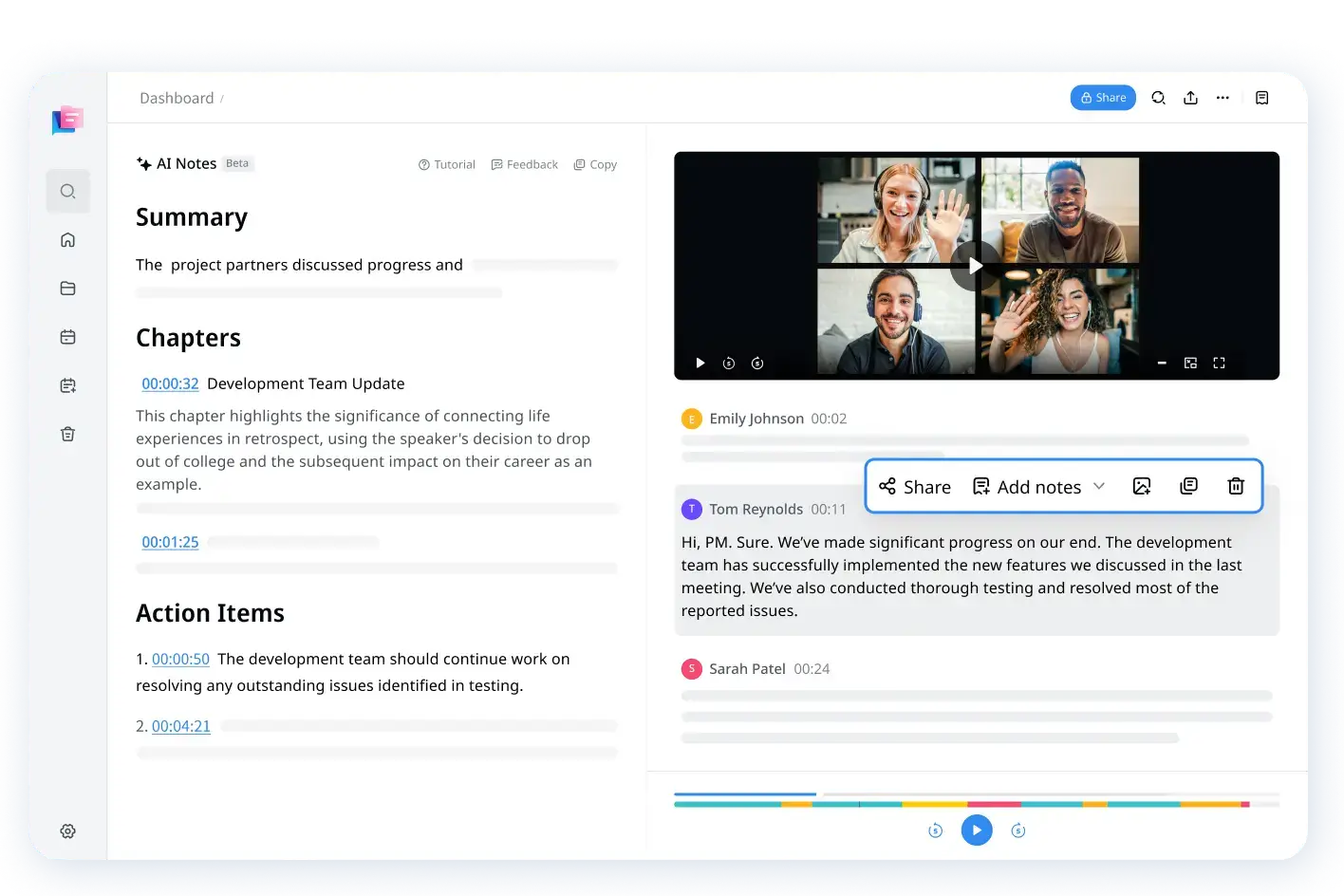
FAQs
Does Spotify have subtitles for podcasts?
Spotify can show the transcript of the podcast (where present) while a user is listening to it. To do this, start playing the episode. Then, in the ‘Now Playing’ view, scroll down to locate the transcript. The transcript can be expanded so that you can follow along with the audio.
Does Spotify translate podcasts?
Spotify launched an AI voice translation pilot in 2023. The feature translates the spoken language into the listener’s native language, but it’s not widely available yet.
At the time of writing, Spotify was testing the service with only five podcasts and hasn't shared any new updates since.